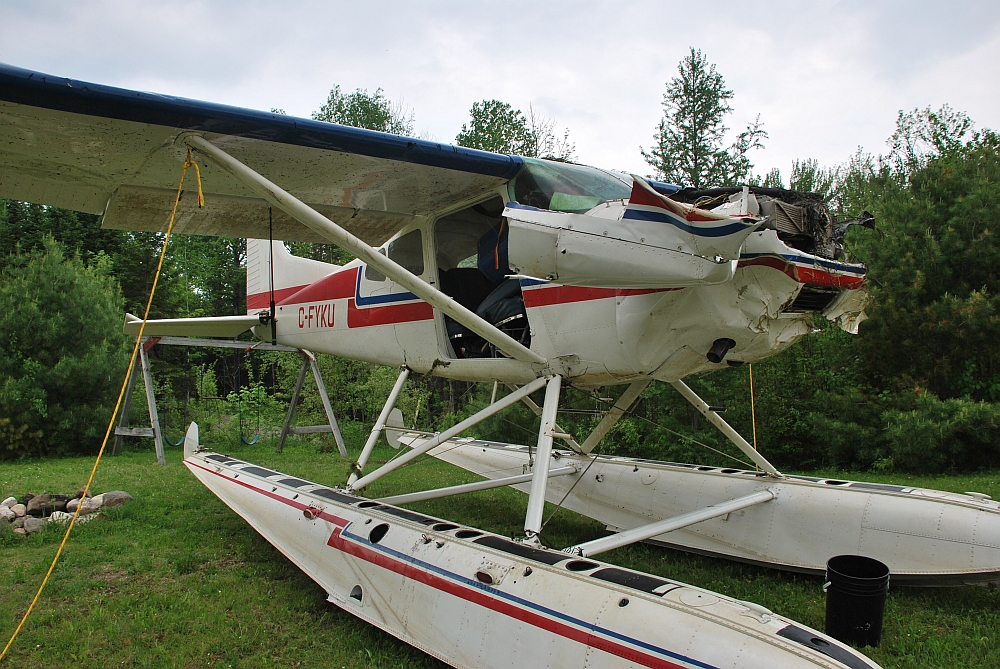Loss of control – Collision with water
Cessna 185E, C-FYKU
Taylor Lake, Ontario
The occurrence
On 24 May 2014, privately-registered Cessna 185E (registration C-FYKU, serial number 185-1484), equipped with amphibious floats, departed the Guelph Airpark for a flight to Taylor Lake, Ontario. The pilot was the sole occupant of the aircraft. While conducting a glassy water landing, the floats dug into the water, the pilot lost control, and the aircraft cartwheeled and sank. The aircraft fuselage was damaged by impact forces, and the pilot's door could not be opened. The pilot survived the impact but was not able to escape the submerged aircraft and drowned. The aircraft was equipped with an emergency locator transmitter which activated; however, no signal was received due to the antenna being submerged. The accident occurred during hours of daylight at approximately 0740 Eastern Daylight Time.
Media materials
News release
Reduced proficiency and lack of egress training contributed to 2014 fatal aircraft accident on Taylor Lake, Ontario
Read the news release
Deployment notice
TSB deployed a team of investigators to an aircraft accident at Taylor Lake, Ontario
Richmond Hill, Ontario, 24 May, 2014 - The Transportation Safety Board of Canada (TSB) deployed a team of investigators to the site of an accident involving a Cessna 185 on Taylor Lake, Ontario. The TSB will gather information and assess the occurrence.
Investigation information
Download high-resolution photos from the TSB Flickr page.
Class of investigation
This is a class 3 investigation. These investigations analyze a small number of safety issues, and may result in recommendations. Class 3 investigations are generally completed within 450 days. For more information, see the Policy on Occurrence Classification.
TSB investigation process
There are 3 phases to a TSB investigation
- Field phase: a team of investigators examines the occurrence site and wreckage, interviews witnesses and collects pertinent information.
- Examination and analysis phase: the TSB reviews pertinent records, tests components of the wreckage in the lab, determines the sequence of events and identifies safety deficiencies. When safety deficiencies are suspected or confirmed, the TSB advises the appropriate authority without waiting until publication of the final report.
- Report phase: a confidential draft report is approved by the Board and sent to persons and corporations who are directly concerned by the report. They then have the opportunity to dispute or correct information they believe to be incorrect. The Board considers all representations before approving the final report, which is subsequently released to the public.
For more information, see our Investigation process page.
The TSB is an independent agency that investigates air, marine, pipeline, and rail transportation occurrences. Its sole aim is the advancement of transportation safety. It is not the function of the Board to assign fault or determine civil or criminal liability.
